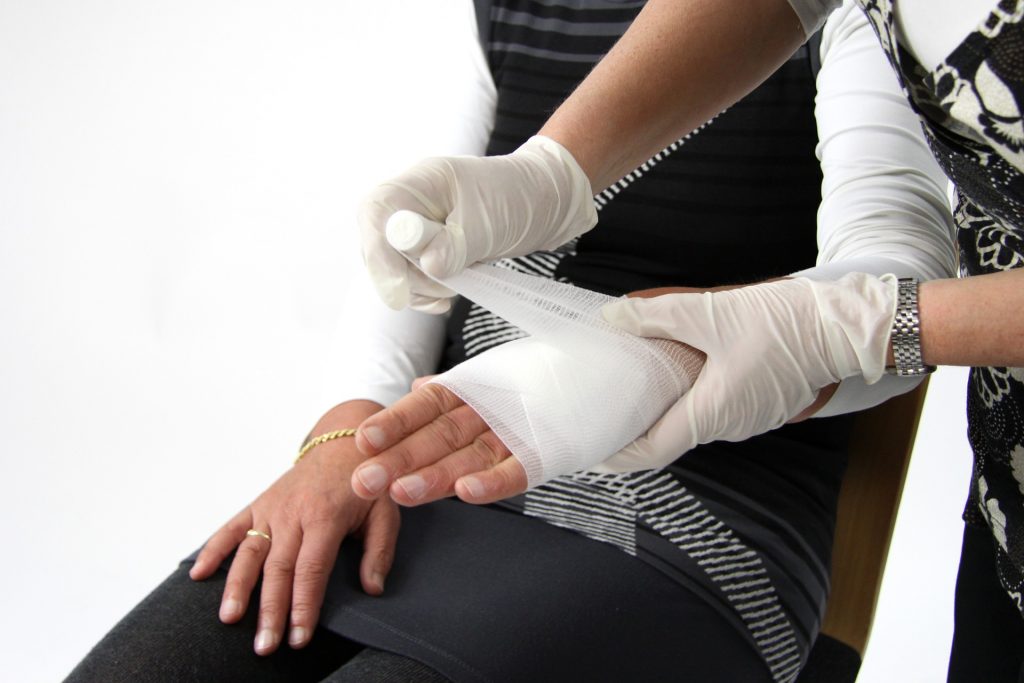INJURY MANAGEMENT

Many people are seen struggling to understand their injuries while others are pretty aware of who to turn to for help in case of an injury. This article entails the various types of injuries along with their treatment.
Chronic versus Acute Injuries
Chronic Injuries, also known as overuse injuries that are a result of untreated or carelessly treated injuries. Often such injuries develop slowly and last a long time. Such injuries occur due to poor habits over time such as our postural habits, abnormal walking/running habits, improper footwear, unbalanced nutritious diet, stress, or lack of hydration. Since the human body cannot stay in one pose the entire day, doing so will create muscle imbalances such as muscle weakness or tightness.
Examples are stress fractures, runner’s heel, and knee inflammation, tennis elbow, etc.
In the case of chronic injuries, the longer the injury exists, the longer it will take to recover so its desire to take action earlier to avoid any mishap.
On the other hand, acute injuries are sudden injuries that result from any traumatic event such as fractures, dislocations, crashing into another player while playing, etc. Acute injuries normally call for first aid at the begging followed by serious medical attention and physiotherapy.
The symptoms of acute injuries will tell you which tissue is involved in terms of varying degrees of severity.
Nerve impingement
Nerve impingement commonly known as pinched nerve as well occurs when the nearby tissues, tendons, or muscles apply too much pressure on the nerve. You’ll often feel numbness, pins, and needles, weakness, decreased sensation, difficulty in walking due to loss of control of an affected limb. For example, a bulged disc at the cervical spine generates pain that travels down the back of your leg. This often happens when you sit in an unnatural position for some time. However, stretching your muscles can relieve these symptoms. In extreme cases, you should see a physiotherapist.
Nerve Inflammation
Often people who are suffering from an impinged nerve get inflammation on the nerve which ultimately increases pressure on the affected nerve and causes it to dysfunction. The feel can be described as a sudden, sharp, or stabbing pain that flows down the nerve pathway. It can cause reduced functioning of the affected limb.
An example is sciatica which is an inflamed sciatic nerve that causes pain at the back of the leg, the inner thighs, and finally going to the foot. Viral infections are also the cause of nerve inflammation. It’s recommended seeking medical advice as soon as possible because extended inflammation can cause permanent nerve damage.
Muscle spasms and strains
Muscle spasms result from inflammation when the muscle is overstretched or torn. It normally starts from a muscle strain that causes severe low back pain. Muscle spasms normally occur if you stay in one position for a longer period for example sitting on a computer while working for continuously 8 hours.
In the state of prolonged muscle contraction, blood flow is restricted thus reducing the oxygen and nutrients supply to the muscle therefore impeding the removal of metabolic waste. Due to this the surrounding connective tissues which run through the muscle also get affected.
Muscle strains cause myofascial pain syndrome which is referred to as inflammation in the body’s tissue. Adhesions (slippery gel-like connective tissue) forms in the myofascial. The fascia works to provide tensile strength to the muscles while at the same time acting as a lubricating surface to facilitate the smooth slide of tissues and muscles over each other.
Adhesions result in postural changes in the body and a significant amount of pain in muscular-skeletal injury. The symptoms involve sharp jabbing pain on movement to burning and tingling. Tingling often results from nerve sensitization caused by fascia or muscle impinging on the nerve endings and building up of metabolic waste in the tissue. Trigger points characterized with hyper reflexivity, appear in the muscles in which the dysfunctional nerve will cause the muscles to spasm and shorten thus reducing the speed of motion. If you try to lengthen the muscle or try to achieve a normal range of activity will ultimately evoke a stretch reflex which will ultimately lead to increased spasm and pain.
Before you get to experience such severe symptoms, you’ll have plenty of clues that something is not well. In the earlier stages, you’ll experience muscle stiffness and fatigue that tends to get worse in the morning due to the toxins being build up overnight. However, the pain will dissipate as you work through the day. Often remedial massage and heating will work in soothing it. However if you leave it untreated, then you might need a longer course of intensive treatment.
Acute Muscle Injury
Acute muscle injury occurs in case of sudden muscle breakdown. Such tears result from injuries or trauma. If the muscle swells and becomes turgid, make sure not to massage or expose it to heat otherwise it will cause further damage. So the best treatment is always to try first aid and then see a physiotherapist.
Tendon Injuries
Tendons are tough fibres that are inelastic and attach the muscle to the bone. Most tendon injuries occur near joints such as shoulder, elbow, ankle, or knee. A broken tendon will result in muscle spasm resulting in reduced functioning of the muscle. You’ll get to experience symptoms at the time of the trauma but it will worsen as the inflammation will set in. It might become painful to touch and might even swell. In extreme cases, it’s recommended to see a doctor.
IMPORTANT – AVOID STRETCHING THE MUSCLE IF ANY OF THE ABOVE SYMPTOMS ARE PRESENT. SEEK TREATMENT.
Tendon injuries cause perceived weakness even after the pain has gone. For example, you may have a badly sprained ankle once that causes you to roll the ankle even on a flat ground. This results due to the damaged proprioceptors that relay spatial information from the limb to the brain. When these receptors are damaged, the brain doesn’t know where your foot is in space thus putting your foot in the wrong direction hence rolling your ankle.
Tendonitis is the result of inflammation of the tendon usually when a person injures or overuses a tendon during sport. It usually happens at the elbow, finger, wrist or thighs. Tendons may become stiff and painful to touch hence it’s important to consult a physiotherapist or a sports massage therapist.
Tenosynovitis is caused by inflammation of the tendon sheath. The symptoms are much similar to those of tendonitis. Hence seek immediate treatment from a physiotherapist.
Bursitis
Bursa is fluid-filled sacs that cushion the bones, tendons, and muscles near the joints. Bursitis is an extremely painful condition in which bursae becomes inflamed. Pain occurs when pressure is applied to the bursa either from lying or leaning on it. The treatment normally involves the combination of massage and physiotherapy especially if the lower limb is affected.
Ligament and Joint Injury (sprain)
Ligaments are fibrous tissues that connect bones. If the joint is overstretched, the ligament might get damaged leading the misalignment of the joints. This makes it difficult to bear weight on the joint this causing difficulty in moving too. The joint will ultimately weaken. There are specific exercises to strengthen the area and to heal the ligaments. If there occurs a difficulty in realigning the joints, then manipulation is suggested. Make sure this should be done by a qualified physiotherapist.
To sum up, if the pain continues to worsen beyond 3 days, or if you experience that your symptoms are worsening with time, please seek the doctor’s advice.
